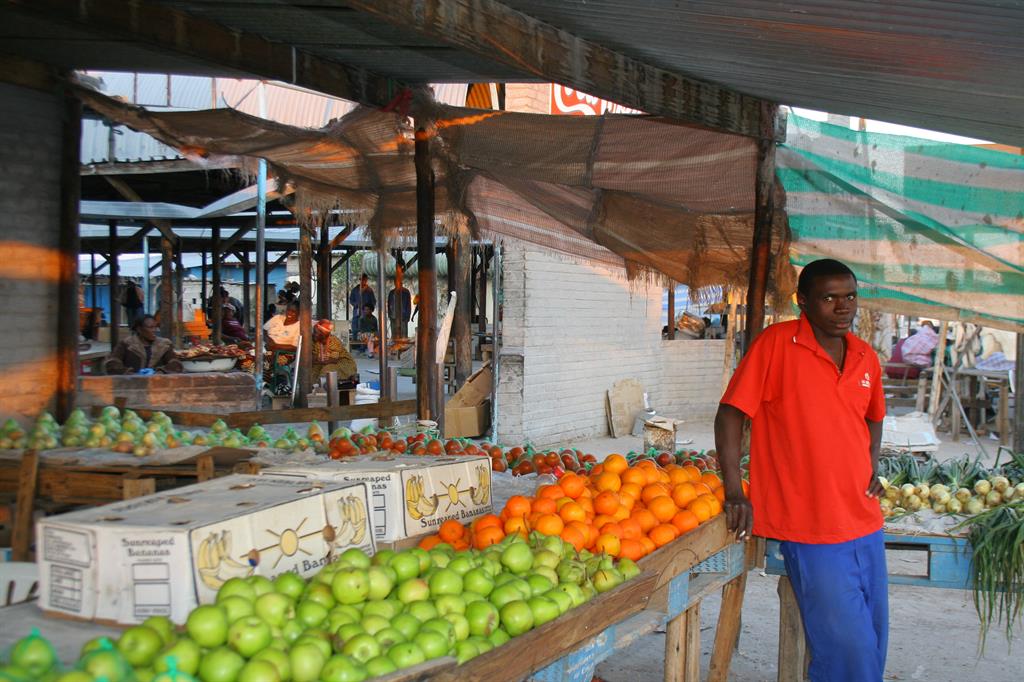Namibia imports 96% of its fruit
Table grapes do very well in Namibia and account for 80% of exports.
Namibia imported 96% of its total fruit demand in 2017/18, and a strategy is needed to boost local fruit production.
This was said by agriculture permanent secretary Percy Misika at a workshop on the Namibian Agronomic Board's (NAB) strategic plan for the next five years.
Providing further statistics on horticulture production, Misika said Namibia produced 25 599 tonnes of fruit and vegetables, imported 52 853 tonnes.
Table grapes accounted for 80% of horticulture exports, with the remaining 20% consisting of dates, tomatoes and onions.
With regard to other crops, Namibia produced 60% of the white maize consumed locally during 2017/18.
A total of 76 660 tonnes of maize were produced locally while 50 483 tonnes were imported.
About 40% of the country's pearl millet (mahangu) consumption was produced locally, with 2 344 tonnes produced locally and 5 813 tonnes imported.
Of the 111 107 tonnes of wheat consumed locally, only 4% was produced in Namibia. A mere 6 863 tonnes were produced locally while 104 244 tonnes were imported.
“As a country we aspire to see agronomy and horticulture development driven by both scientific and market research so that in our journey we tackle challenges with solutions that improve the way we do things in order to reach our targets easily,” Misika said.
“Therefore, we are planning to see how we can improve the situation we are finding ourselves in as a net importer so that we can be self-sufficient. This will be achieved by engaging in production, processing, storage and marketing in a sustainable manner to ensure food security.”
He said the NAB is mandated to promote the agronomic industry and facilitate production, processing, storage and marketing of controlled products. According to him a guiding framework is required to facilitate the board's functions.
Misika said the strategic plan should be a dynamic blueprint for enhancing the performance of the NAB and driving the growth of the agronomic and horticulture sectors.
“The future is uncertain if no direction is outlined for any given organisation, the absence [of a framework]should be a matter of great concern to the board of directors as well as its stakeholders. However, we should note that we will always be faced with change, and we need to manage change rather than react to it.”
Misika said change is always easier to manage when there are clear directions outlined in a framework.
Misika said proposals should be made that would improve the proposed plan rather than to criticise without proposing any substitute.
“While we deliberate, we should keep in mind that we are responsible for the entire country, where no one should be left out, and in return ensure food security and improve the lives of our communities around the country.”
ELLANIE SMIT
This was said by agriculture permanent secretary Percy Misika at a workshop on the Namibian Agronomic Board's (NAB) strategic plan for the next five years.
Providing further statistics on horticulture production, Misika said Namibia produced 25 599 tonnes of fruit and vegetables, imported 52 853 tonnes.
Table grapes accounted for 80% of horticulture exports, with the remaining 20% consisting of dates, tomatoes and onions.
With regard to other crops, Namibia produced 60% of the white maize consumed locally during 2017/18.
A total of 76 660 tonnes of maize were produced locally while 50 483 tonnes were imported.
About 40% of the country's pearl millet (mahangu) consumption was produced locally, with 2 344 tonnes produced locally and 5 813 tonnes imported.
Of the 111 107 tonnes of wheat consumed locally, only 4% was produced in Namibia. A mere 6 863 tonnes were produced locally while 104 244 tonnes were imported.
“As a country we aspire to see agronomy and horticulture development driven by both scientific and market research so that in our journey we tackle challenges with solutions that improve the way we do things in order to reach our targets easily,” Misika said.
“Therefore, we are planning to see how we can improve the situation we are finding ourselves in as a net importer so that we can be self-sufficient. This will be achieved by engaging in production, processing, storage and marketing in a sustainable manner to ensure food security.”
He said the NAB is mandated to promote the agronomic industry and facilitate production, processing, storage and marketing of controlled products. According to him a guiding framework is required to facilitate the board's functions.
Misika said the strategic plan should be a dynamic blueprint for enhancing the performance of the NAB and driving the growth of the agronomic and horticulture sectors.
“The future is uncertain if no direction is outlined for any given organisation, the absence [of a framework]should be a matter of great concern to the board of directors as well as its stakeholders. However, we should note that we will always be faced with change, and we need to manage change rather than react to it.”
Misika said change is always easier to manage when there are clear directions outlined in a framework.
Misika said proposals should be made that would improve the proposed plan rather than to criticise without proposing any substitute.
“While we deliberate, we should keep in mind that we are responsible for the entire country, where no one should be left out, and in return ensure food security and improve the lives of our communities around the country.”
ELLANIE SMIT





Comments
Namibian Sun
No comments have been left on this article